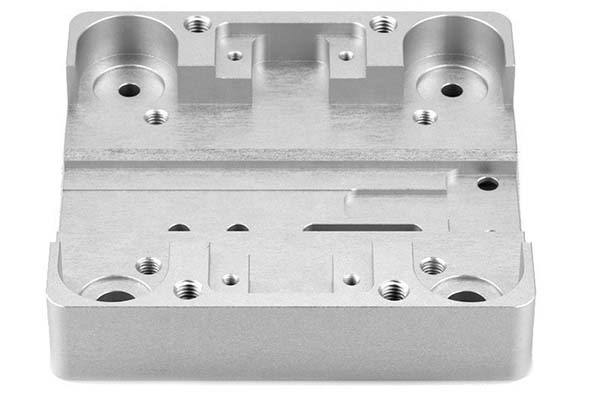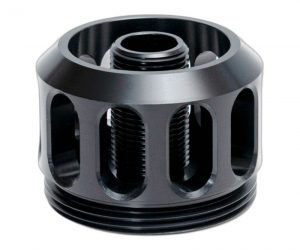Introduction to Precision Aluminum Stamping
Precision aluminum stamping is a specialized manufacturing process that transforms aluminum sheets into precise and intricate parts using dies and punches. This technique is renowned for its ability to produce parts with high accuracy, repeatability, and efficiency, even when dealing with complex geometries and tight tolerances. Aluminum's unique properties, such as its lightweight, durability, and corrosion resistance, make it an ideal material for a wide range of applications across various industries. Precision aluminum stamping leverages these properties to deliver high-quality components that meet stringent industry standards.
Types of Aluminum Materials Used
Precision aluminum stamping utilizes a variety of aluminum alloys, each tailored to specific application requirements. Common types include:
- Aluminum 1050 and 1100: Known for their excellent formability and corrosion resistance, these alloys are ideal for applications requiring deep drawing.
- Aluminum 3003: A versatile alloy with good strength, formability, and corrosion resistance, commonly used in general stamping applications.
- Aluminum 5052: Offers high strength and excellent corrosion resistance, making it suitable for marine and aerospace applications.
- Aluminum 6061: A widely used alloy known for its balance of strength, formability, and corrosion resistance, suitable for a broad range of applications.
- Aluminum 7075: High-strength alloy with excellent fatigue resistance, often used in aerospace and high-performance applications.
The choice of aluminum alloy depends on factors such as strength, formability, corrosion resistance, and cost, ensuring that each part meets the specific requirements of its intended use.
Precision Aluminum Stamping Process
Die Design and Tooling
The success of precision aluminum stamping hinges on the design and quality of the dies. Dies are custom-made tools that define the shape and dimensions of the final part. They are typically crafted from high-strength steel or other durable materials to withstand the pressures of the stamping process. The design phase involves creating detailed blueprints using CAD/CAM software to ensure that the die accurately reflects the desired part geometry. Advanced machining techniques, such as milling, grinding, and electrical discharge machining (EDM), are then used to fabricate the die with high precision.
Press Operation and Stamping
The actual stamping process takes place on specialized machinery known as stamping presses. These presses apply significant force to the aluminum sheet, causing it to conform to the shape of the die. Stamping presses come in various sizes and capacities, ranging from small manual presses for prototyping to large, high-speed presses capable of producing thousands of parts per minute. Modern presses are often equipped with advanced automation and control systems that ensure precise positioning, force application, and cycle times. This automation not only increases productivity but also enhances the consistency and quality of the stamped parts.
Quality Control and Inspection
Ensuring the quality and consistency of stamped parts is a top priority in precision aluminum stamping. Once the parts are stamped, they undergo rigorous inspection to verify that they meet the required specifications and tolerances. Advanced inspection techniques, such as coordinate measuring machines (CMM), optical inspection systems, and non-destructive testing (NDT) methods, are used to verify part accuracy. Any deviations from the specified tolerances are addressed through corrective measures, ensuring that only high-quality parts are released for use.
Applications of Precision Aluminum Stamping
Automotive Industry
Precision aluminum stamping plays a crucial role in the automotive industry by producing lightweight, durable, and corrosion-resistant components. Common applications include:
- Engine Components: Such as pistons, connecting rods, and cylinder heads.
- Body Panels: Including doors, hoods, and fenders.
- Transmission Components: Such as gears and housings.
- Safety Systems: Including brake components and airbag housings.
Aluminum's lightweight nature helps improve fuel efficiency and reduce emissions, making it a preferred material for modern automotive applications.
Aerospace and Defense
The aerospace and defense sectors demand components with high strength, low weight, and excellent corrosion resistance. Precision aluminum stamping is used to produce critical parts such as:
- Aircraft Structural Components: Including wing spars, fuselage frames, and landing gear parts.
- Engine Parts: Such as turbine blades and combustion chamber components.
- Avionics Housings: For protecting sensitive electronic systems.
Aluminum alloys like 7075 and 6061 are commonly used due to their high strength-to-weight ratio, making them ideal for aerospace applications.
Electronics and Telecommunications
In the electronics and telecommunications industries, precision aluminum stamping creates components that are both lightweight and durable. Common applications include:
- Caixas electrónicas:,Tais como caixas para smartphones, computadores portáteis e outros dispositivos.,Dissipadores de calor:,Para gerir o desempenho térmico em dispositivos electrónicos.,Telecomunicações:,Incluindo componentes para infra-estruturas 5G e dispositivos de rede.,O alumínio e o aço inoxidável são normalmente utilizados devido à sua excelente condutividade térmica e resistência à corrosão.,Dispositivos e equipamentos médicos:,A indústria médica depende da estampagem de metal para componentes utilizados em dispositivos e equipamentos que salvam vidas. As aplicações mais comuns incluem: Instrumentos cirúrgicos, tais como bisturis, pinças e pinças; Implantes, incluindo implantes ortopédicos e componentes dentários; Equipamentos de diagnóstico, tais como componentes para máquinas de ressonância magnética e equipamentos de raios X; Aço inoxidável e aço inoxidável são frequentemente utilizados devido à sua biocompatibilidade, durabilidade e resistência à corrosão. O processo pode ser aumentado ou reduzido para satisfazer as necessidades de produção, desde pequenas séries de lotes até à produção de grandes volumes. O software CAD/CAM avançado e as ferramentas de simulação permitem que os designers optimizem a geometria das peças, reduzindo a utilização de material e melhorando a eficiência da produção.,Escolhas de materiais e acabamentos,Os fabricantes podem escolher entre uma vasta gama de materiais, cada um com propriedades únicas adequadas a diferentes aplicações. Além disso, podem ser aplicados vários acabamentos de superfície, tais como chapeamento, revestimento e tratamento térmico, para melhorar o desempenho, a durabilidade e o aspeto da peça.,Produção de pequenas séries e protótipos,A estampagem de metais não se limita à produção de grandes volumes. Também pode ser utilizada para pequenas séries e produção, permitindo aos fabricantes testar e aperfeiçoar projectos antes de se comprometerem com a produção em grande escala. Esta flexibilidade torna a estampagem de metal uma escolha ideal para startups e empresas que desenvolvem novos produtos.,FAQ,1. Quais são as principais vantagens da estampagem de metal?,A estampagem de metal oferece várias vantagens, incluindo alta eficiência, precisão e eficácia. Pode produzir grandes volumes de peças com qualidade consistente e tolerâncias apertadas. Além disso, a estampagem de metal oferece flexibilidade de design e a capacidade de trabalhar com uma ampla gama de materiais. 2. Que indústrias utilizam normalmente a estampagem de metais?,A estampagem de metais é amplamente utilizada nas indústrias automóvel, aeroespacial, eletrónica, de telecomunicações e médica. Estes sectores exigem componentes duráveis, resistentes e fiáveis que cumpram rigorosos padrões de qualidade.,3. Que tipos de materiais são utilizados na estampagem de metais?,Os materiais comuns utilizados na estampagem de metais incluem o aço, o alumínio, o latão e o aço inoxidável. Cada material oferece propriedades únicas adequadas a diferentes aplicações, assegurando que os fabricantes podem escolher a melhor opção para as suas necessidades específicas.,A estampagem de metais é um processo de fabrico versátil que envolve a utilização de matrizes e punções para moldar e formar chapas metálicas nas formas e tamanhos desejados. Esta tecnologia Such as cases for smartphones, laptops, and other devices.
- Heat Sinks: For managing thermal performance in electronic devices.
- Telecommunications Equipment: Including components for 5G infrastructure and networking devices.
Aluminum's excellent thermal conductivity and lightweight nature make it an ideal material for these applications.
Medical Devices and Equipment
The medical industry relies on precision aluminum stamping for components used in life-saving devices and equipment. Common applications include:
- Surgical Instruments: Such as scalpels, forceps, and clamps.
- Implants: Including orthopedic implants and dental components.
- Diagnostic Equipment: Such as components for MRI machines and X-ray equipment.
Aluminum's biocompatibility, durability, and corrosion resistance make it suitable for medical applications where reliability and safety are paramount.
Conclusion and Future Trends in Precision Aluminum Stamping
Precision aluminum stamping is a versatile and essential manufacturing process that delivers high-quality components with tight tolerances and complex geometries. Its ability to produce lightweight, durable, and corrosion-resistant parts makes it a preferred choice across various industries, including automotive, aerospace, electronics, and medical devices. As technology continues to advance, precision aluminum stamping is poised to benefit from innovations in materials science, tooling technology, and automation. These advancements will further enhance the efficiency, accuracy, and sustainability of the process, ensuring that precision aluminum stamping remains a critical component of modern manufacturing.
FAQ
1. Why is aluminum preferred in precision stamping?
Aluminum is preferred in precision stamping due to its lightweight, high strength-to-weight ratio, excellent corrosion resistance, and good formability. These properties make it ideal for applications in automotive, aerospace, electronics, and medical industries, where lightweight and durable components are required.
2. What are the key benefits of precision aluminum stamping?
Precision aluminum stamping offers several benefits, including high accuracy and repeatability, cost-effectiveness, fast turnaround times, and the ability to produce large volumes of parts with consistent quality. It also provides design flexibility and the option to work with a wide range of aluminum alloys.
3. What industries commonly use precision aluminum stamping?
Precision aluminum stamping is widely used in the automotive, aerospace, electronics, telecommunications, and medical industries. These sectors demand lightweight, durable, and corrosion-resistant components that meet stringent quality standards.


